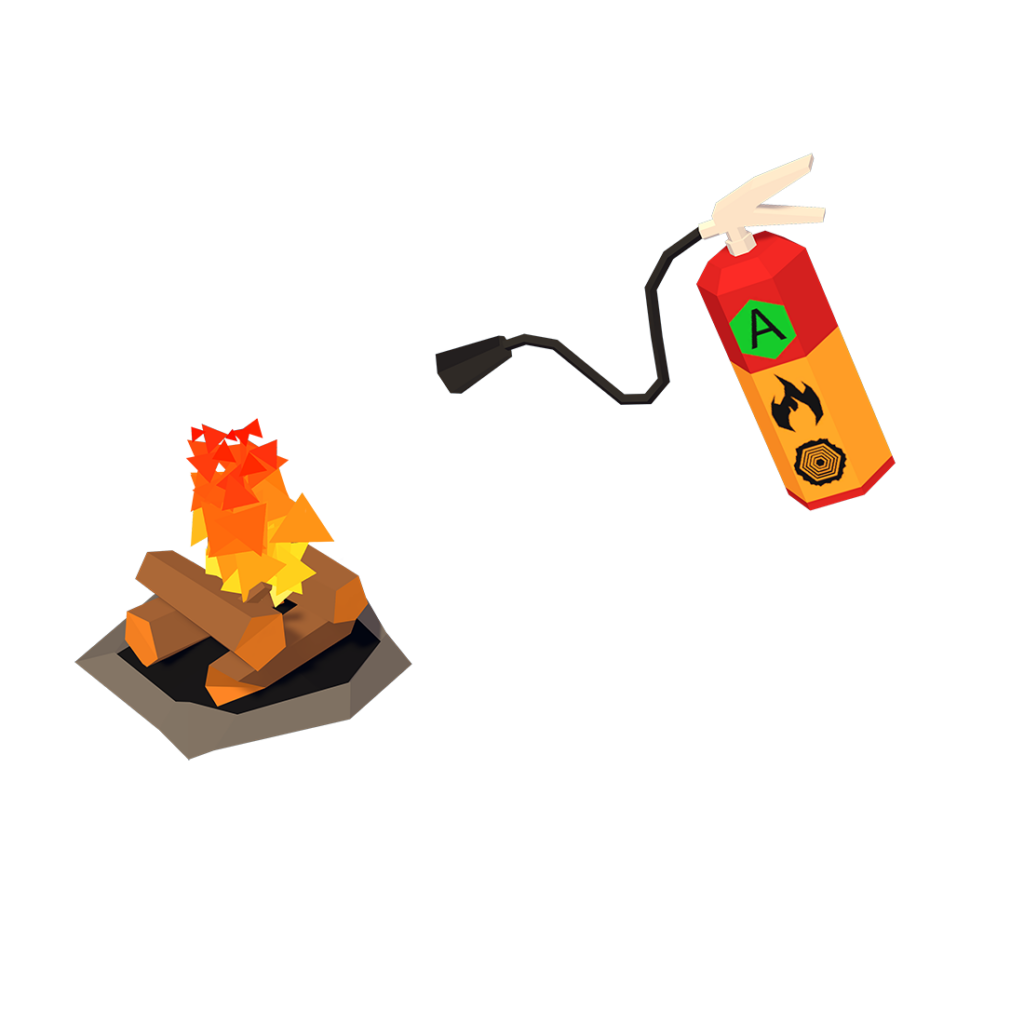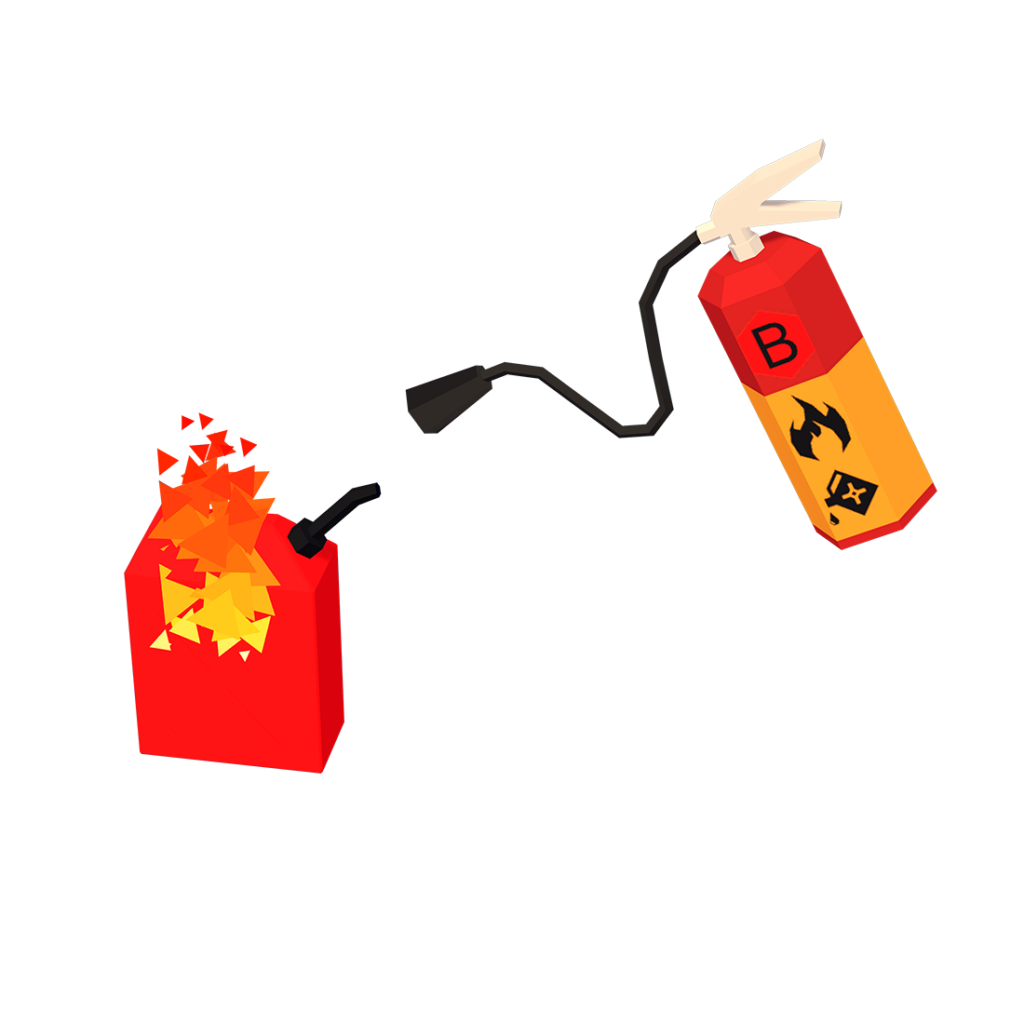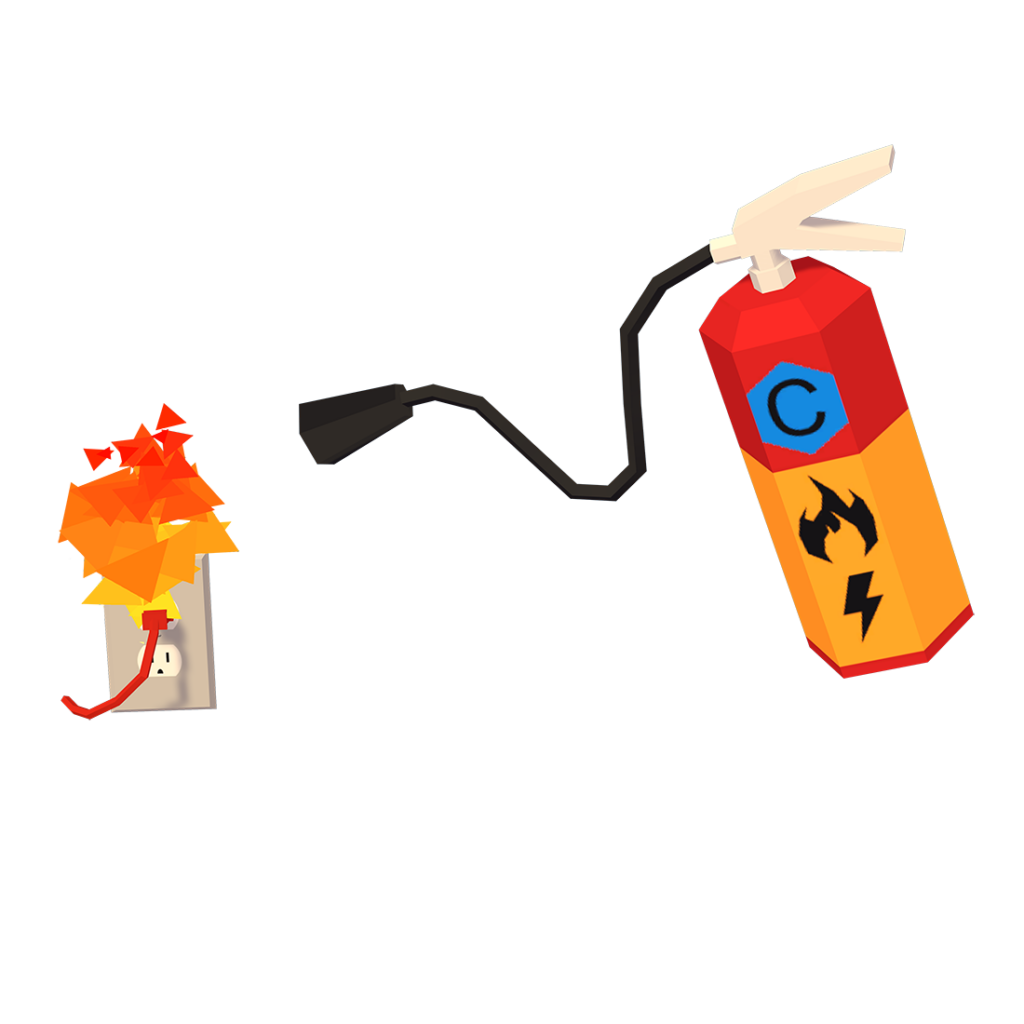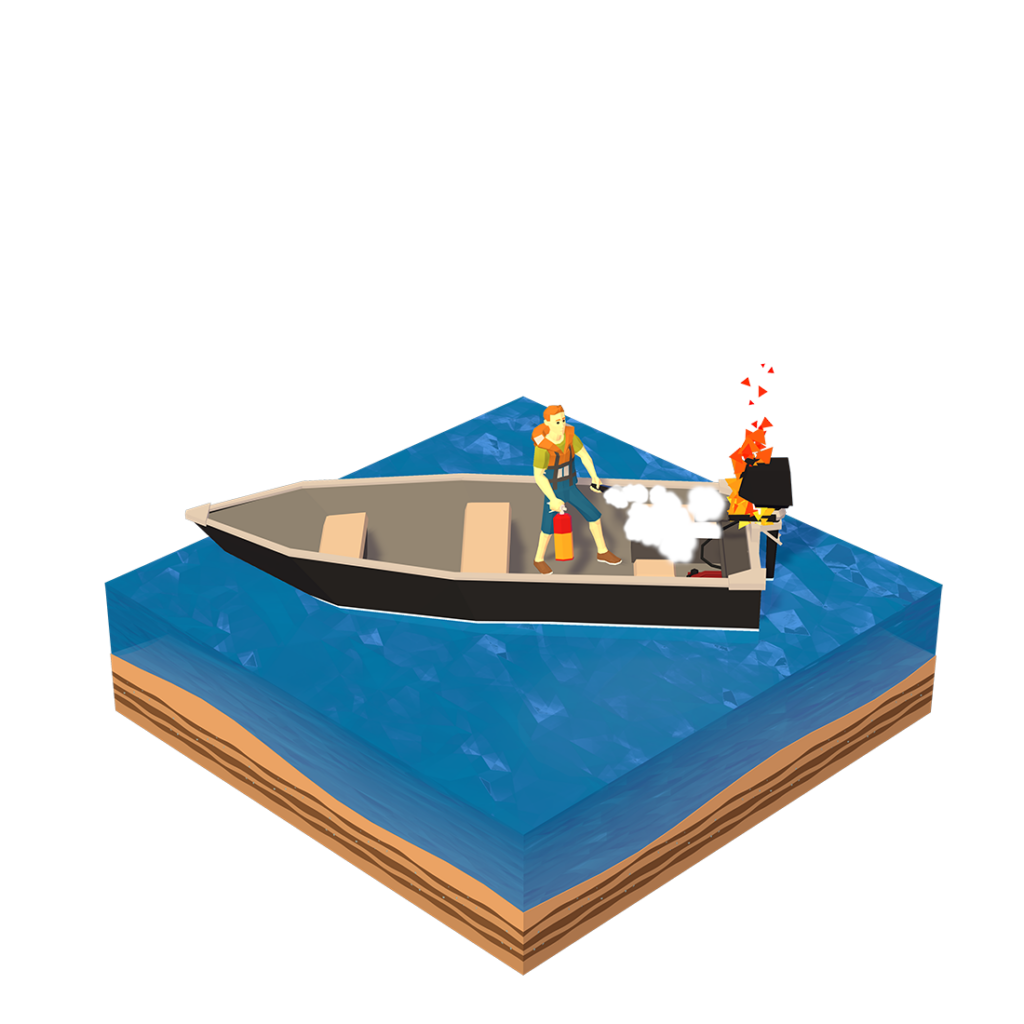Before using fire extinguishers, read the manufacture’s instructions and only use the recommended type of extinguisher.
The Small Vessel Regulations require that Class BC extinguishers be used on pleasure craft in Canada. However, the use of a Class ABC fire extinguisher is recommended. Ensure that the fire extinguisher you choose meets the requirements for the size and type of your craft. (See “Required Safety Equipment”, Appendix I). Even if your craft is equipped with an automatic extinguishing system, you must carry the required portable extinguishers.
- Stand at least 1 meter from the source of the fire.
- Pull the safety pin on the handle of the fire extinguisher.
- Aim at the base of the flames and squeeze the trigger.
- Spray the base of the fire with a left to right sweeping.
Class A: Designed for use on combustible solid materials such as wood and paper.
Class B: Designed for use on combustible liquid fires including gas, oil and grease.
Class C: Designed for use on electrical fires.
The number preceding the letter designation identifies the size of fire the extinguisher is capable of putting out. For example, a Class 3 extinguisher can extinguish a larger fire than a Class 2 extinguisher, and so on.
Store your fire extinguishers in a secure cool dry location, that is easily accessible. (Marine types are recommended as they are more corrosion resistant.)
Check your fire extinguisher(s) on a regular basis. Have them inspected as per manufacturers recommendations. CO2 extinguishers should be turned upside down and shaken on a monthly basis. They should also be weighed annually to ensure they are at least at 90% capacity. If they have a gauge, check it monthly to ensure it is at full capacity. Hoses and seals should also be checked regularly and changed if needed.
Warning
CO2 and Halon type extinguishers utilize colorless, odorless gases that displace oxygen. Be careful when using these in an enclosed place.

